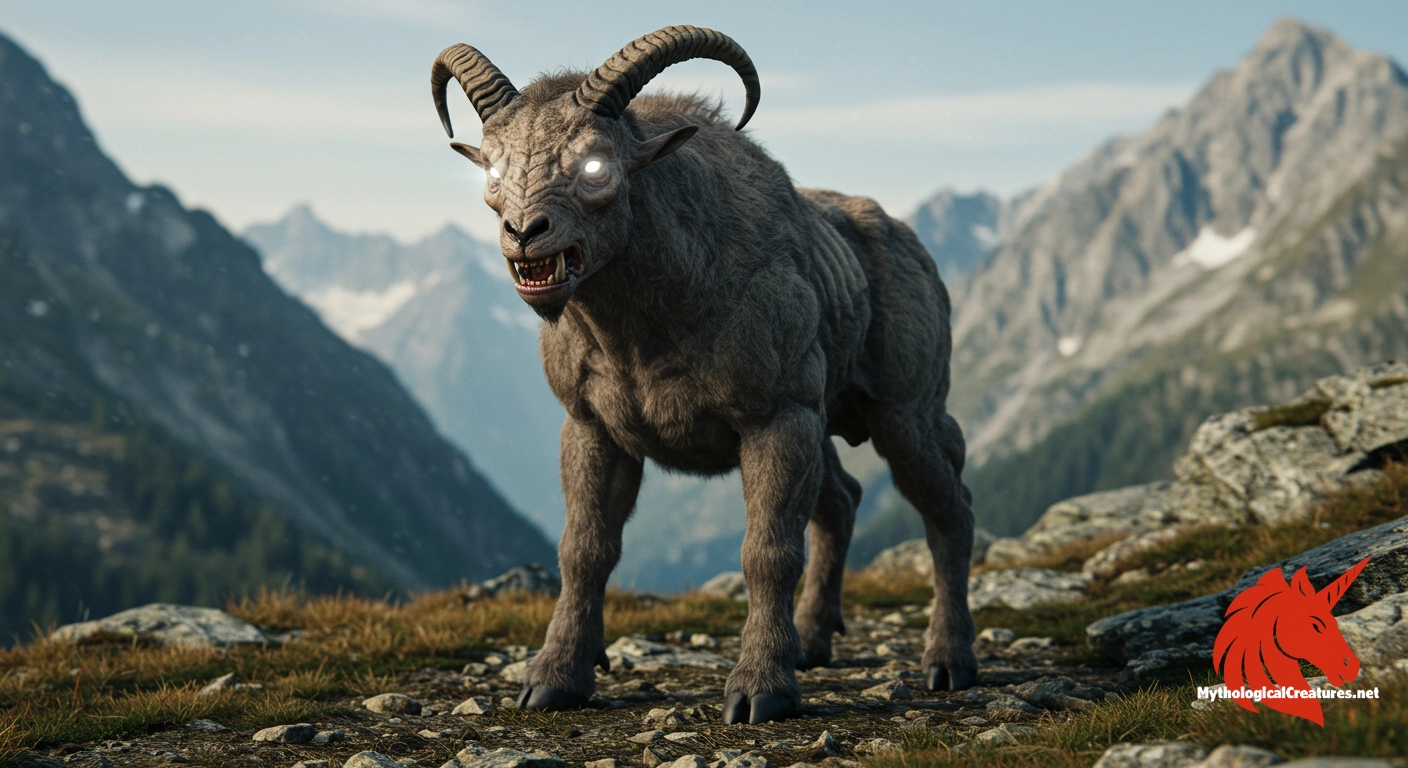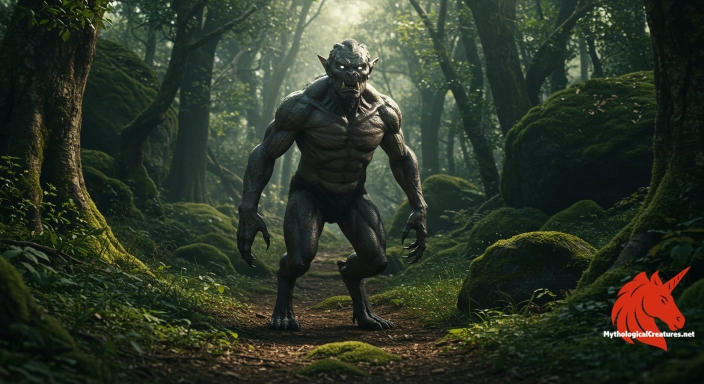Badalisc: The Badalisc is a legendary creature from the Val Camonica region in Italy’s southern central Alps.

Badalisc
Badalisc - Symbolises the fusion of fear and festivity, reflecting the unique cultural heritage of Val Camonica.
Origins & First Encounters
The Badalisc is a mysterious mythic figure rooted in the richly woven cultural tapestry of Val Camonica, an area in the southern central Alps of Italy. Its legend appears to originate from ancient local traditions, where stories were orally transmitted through generations. The creature’s earliest mentions are entwined with the region’s seasonal celebrations and mountain rituals. Local communities have long imbued the Badalisc with qualities that speak to both the ferocity and the capricious nature of the wild. Over time, it has come to represent the spirit of the untamed Alps, a testament to humanity’s enduring fascination with the mysterious forces of nature. The creature’s lore reflects a blending of pre-Christian and medieval influences, echoing the cultural transitions experienced in this rugged region. Its enduring myth continues to be a point of pride and curiosity among locals and visitors alike, symbolising a bridge between the ancient past and present traditions. With each retelling, the Badalisc grows more enigmatic, inspiring a sense of wonder and a deep connection to the natural world.
Source Texts & Tale Variants
Historical accounts of the Badalisc are found scattered across an array of local narratives and festival traditions. Early records were primarily oral, with elders recounting tales that illustrated both its enigmatic presence and ambiguous intentions. Written descriptions began to appear in regional chronicles during later centuries, offering glimpses into how the creature was perceived by different generations. Some versions of the tale portray the Badalisc as a benign spirit tied to the natural order, while others hint at a more ominous role as a harbinger of change. Folklorists and ethnographers have compiled these diverse stories into dedicated studies, highlighting the creature’s evolving symbolism. Manuscripts, local diaries, and even art in village chapels have provided rich, albeit varied, insights into its mythic qualities. In contemporary times, the narrative has been revitalised through cultural festivals where the creature is re-enacted with great enthusiasm. These various sources collectively underscore a layered myth that has adapted over time, reflecting the shifting beliefs and artistic expressions of the Alpine communities.
Form & Powers
The physical depiction of the Badalisc is strikingly unique, characterised by an unusual blend of human and animalistic features. Its most notable component is a large head covered in a coarse, goat-like skin that shrouds its true nature in mystery. Two small, delicate horns jut from this head, contributing to an overall appearance that is both whimsical and eerie. The creature boasts a disproportionately huge mouth, which in many tellings seems capable of expressing a range of emotions from mirth to menace. Glowing eyes, often described as pulsating with an inner light, further enhance its otherworldly aura and suggest a deep, perhaps mystical, awareness. Some artistic interpretations lend additional texture to its visage, using shadow and light to emphasise a certain primordial quality. Despite variations in its illustrated form, the core elements remain consistent, affirming its identity across different retellings. This physical manifestation, rich in detail and imbued with symbolic power, continues to inspire both artistic creativity and scholarly debate.
Regional Faces
The portrayal of the Badalisc varies considerably across different parts of the Alpine region, reflecting local customs and unique cultural inflections. In Val Camonica, its image is celebrated with a specificity that ties it closely to regional history and seasonal rites. Neighboring communities have adopted and adapted elements of its mythology, sometimes emphasising more playful or cautionary aspects to suit local narratives. In certain valleys, the creature is celebrated in annual festivals where its depiction is softened into a figure that marks the passage of harsh winters into the vibrancy of spring. Variations in costume design, ritual performance, and even the creature’s attributed character reveal a fascinating spectrum of interpretations. Some regions accentuate its role as a guardian of nature, while others utilise its image as a reminder of the unpredictable forces of the wilderness. This regional divergence not only adds depth to the myth but also highlights the dynamic interplay between local identity and broader folkloric trends. Thus, while the Badalisc retains a set of iconic features, its regional adaptations provide a colourful insight into the varied cultural landscapes of the Alps.
Cultural Parallels
The myth of the Badalisc finds intriguing parallels with a number of other European legendary figures, revealing shared themes that transcend regional boundaries. Its combined elements of human and animal traits echo characteristics found in the faun and satyr figures from Greco-Roman mythology, whose depictions also embrace both mirth and mischief. The creature’s goat-like features draw an unexpected comparison to the modern symbolic representations observed in figures such as Pan, whose wild, natural essence equally fascinates and unsettles. Similar to other chimeric beings in European folklore, the Badalisc functions as a symbol for both fertility and the untamed aspects of nature. Cross-cultural comparisons bring to light its affinity with midwinter ritual figures, which are often celebrated through masks and masquerades that challenge the boundaries between the everyday and the eternal. Like the legendary Krampus of Central European lore, it embodies a dual nature that can be interpreted as either protective or forewarning. This comparative analysis shines a light on the broader European tradition of embodying natural phenomena in hybrid creatures. In doing so, the Badalisc not only stands as a unique emblem of its native region but also resonates with universal mythic motifs found throughout the continent.
Legacy & Modern Evolution
Over the centuries, the figure of the Badalisc has undergone a significant transformation, evolving from an obscure local myth to an emblematic presence in modern cultural festivities. Once confined to whispered legends and secretive village rituals, its image now features prominently in public celebrations that attract both local enthusiasts and curious visitors. Contemporary reinterpretations often blend traditional elements with modern performance art, reaffirming its connection to both the ancient past and the current cultural zeitgeist. The creature has even inspired a range of creative expressions, from theatrical presentations to visual arts, which re-imagine its mystique for new generations. In many modern portrayals, the Badalisc is seen as a symbol of regional pride, celebrating a heritage that is at once timeless and adaptable. Tourism initiatives have embraced this myth, promoting festivals that highlight its storied past while offering fresh, interactive experiences. Such adaptations reveal how the creature’s symbolism has grown to encompass themes of renewal, resilience, and the cyclical nature of tradition. Ultimately, the enduring legacy of the Badalisc demonstrates the remarkable capacity of folklore to evolve, continuously captivating minds as it bridges the chasm between history and modernity.
Interesting Fact
It is interesting to note that the Badalisc, despite its fearsome appearance, is celebrated annually in local festivals where its image is embraced as an emblem of the region’s cultural heritage.
Quick Creature Info
Features:
Associations:
Our Mythic Legendary Rating:

Also Sometimes Known As:
Habitat:
Physical Attributes:
Behavior:
Lore:
Related Creatures, Tales or Lore
References
Discover Another Mythical Legend You May Not Have Heard Of?
Uncover the mysteries of ancient folklore and expand your knowledge of legendary beings from cultures around the world.
Dare to Meet the Maricha....
Curated by the Mythological Creatures Team (rev. May 2025)
